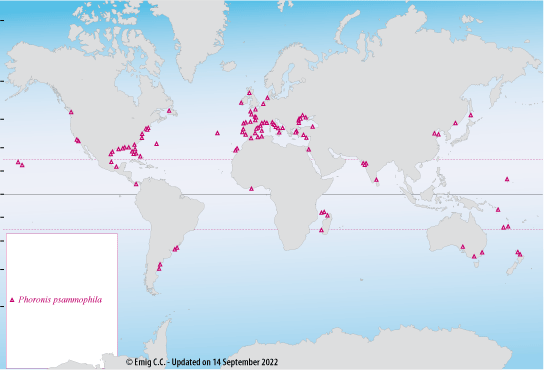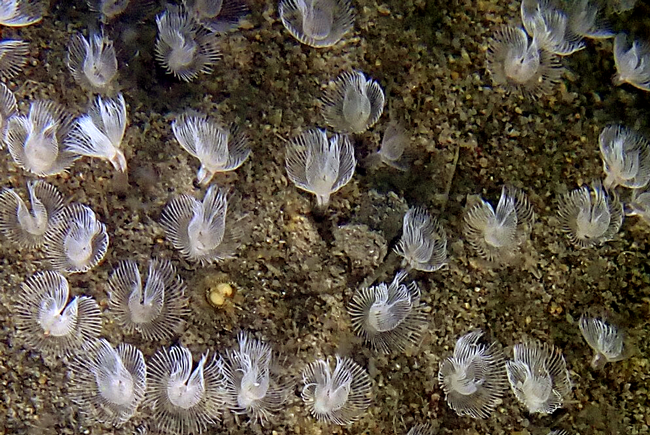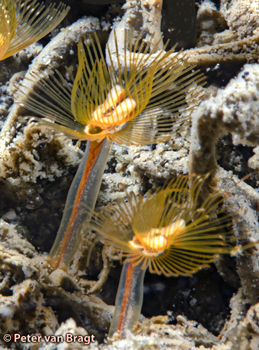|
Phoronis psammophila Cori, 1889 Larva: Actinotrocha sabatieri Roule, 1890 |
|
| Synonyms: Phoronis sabatieri Roule, 1890 Phoronis architecta Andrews, 1890
? Phoronis euxinicola Selys-Longchamps, 1907 |
|
 ° References of the most recent published diagnoses
| ||||||
| Diagnosis | ||||||
|
Last update: July 22, 2006
Extended specimens up to 190 mm long, diameter 0.5-2 mm.
Sexual reproduction dioecious; females brooding embryos in a single mass in lophophoral cavity through nidamental glands of type C (i.e. formed by fusion of inner row of lophophore tentacles); males with large, glandular lophophoral organs. Asexual reproduction by transverse fission. Phoronis psammophila lives in the soft substratum at depths ranging from the intertidal zone to 69 m, commonly between 0 and 10 m. Densities may reach 18,000 to 20,000 ind.m-2. This species particularly prefers a sediment structure mainly composed of fine and very fine sand fractions (58 to 93%), with a moderate muddy fraction (8 to 41%).
Phoronis psammophila is a cosmopolitan species: the distribution is represented below on the map.
Type-locality: Messina (Italia) Last update: September 14, 2022  |

|
Handbook of alien species in Europe (2009) : Comments on the so-called alien phoronid. References on Phoronis psammophila
Fig. 1 - Phoronis psammophila: Espiguette Beach, 1-2 m depth - Le Grau-du-Roi 30240, France.
Fig. 2 - Phoronis psammophila: near Zierikzee in Eastern Scheldt (Netherlands), 12 m depth.
|


